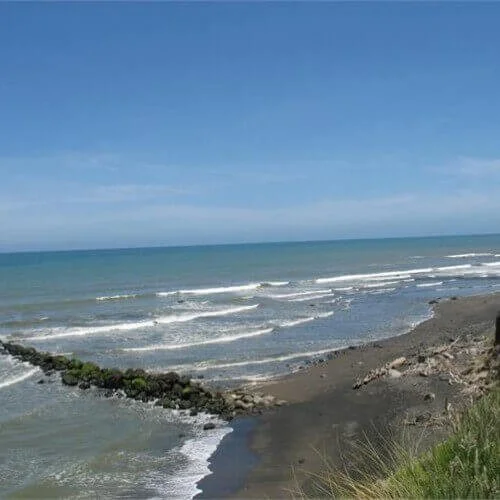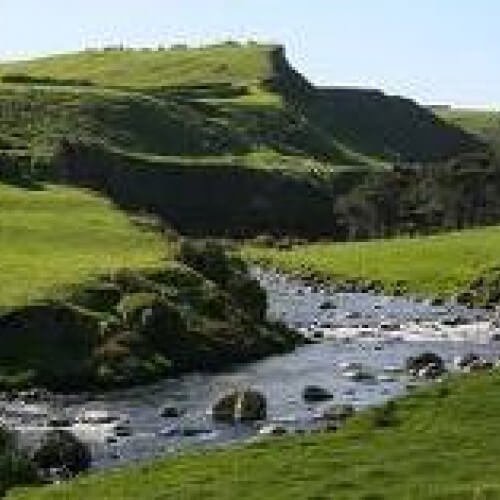About Us
Mai Tangaroa ki Tawhiti Nui - Hawaiki Nui, ki Tawhiti Roa - Hawaiki Roa, ki Tawhiti Pamamao - Hawaiki Pamamao rā anō
E tū e tū ki tai. E tū e tū ki uta
Tae noa ki te ngutu awa o Waingongoro ki Wairere
Piki ake ki te tihi o Maunga Taranaki
Huri noa ki te tonga, haere tonu ki te awa o Waingongoro


Te Rua o Te Moko me Umutahi o tātou whenua
Ko Kanihi Māwhitiwhiti te marae
Ko Ketetahi te marae ātea
Ko Kanihi ngā tangata
A Never Ending History
According to tribal history, the people of this hapū are descendants of the tangata whenua tribes who landed at Te Rangatapu on the waka Te Rangiuamutu, captained by Tamatearokai.
The tangata whenua tribes were known as Te Kāhui Maunga, Te Kāhui Toka, Te Kāhui Rere, Te Kāhui Tū, Te Tini o Maru Iwi, Te Tini o Tai Tawaro, Te Kāhui Rū, Te Kāhui Pō and Te Kāhui Tawake.
This hapū also claims ancestry from the waka Aotea Ūtanganui which was captained by Turi Arikinui.
During the fourteenth century, Turi, with his wife Rongorongo and their people, travelled south along the west coast from Kāwhia to Pātea naming many places on their journey including the Waingongoro River.
The eponymous tūpuna of the Kanihi Umutahi hapū is the warrior chief Puawhato. The Kanihi Umutahi people have historically resided on both the western and eastern banks of the Waingongoro River.
The ancient pā, Kanihi is located on the eastern bank of the river on a block of land known as Te Rua o Te Moko.
The Kanihi Umutahi people have been variously known or referred to as the Umutahi, Ketetahi and Māwhitiwhiti people, but choose to identify themselves today as Kanihi.
Humble Beginnings
The current day Pa is located on the reserve that was set aside in 1915 in the names of Te Ranui Omahuru, Matiu Manaia, Kahui Ngairo, Reihana Ngana and Puano in trust for the Umutahi Hapu. The whare was opened in approximately 1943 and was originally used as a social hall. People would congregate from across Taranaki in large numbers to attend the many dances that were held in the whare.
The place gained the reputation of having the “best dance floor” in Taranaki”. It was also widely known as a place for “courting” and many a marriages have been known to have resulted from the many dances that were held in this whare. Weddings, coming of age birthdays were also held with regularity here. The usage of the whare changed around the 1960’s and began to be used in a more formal, marae like setting when whanau began to bring their tupapaku to be laid in the whare. At that time the building still contained reminders of its past life, the stage where the bands played during the dances, the half doors that were used for ticket collecting, the supper room, the half tyres filled with crepe flowers that adorned the walls during those times.
From 1981 to 1985 complete renovation work was undertaken from front to back. The front door was moved to its current position, the stage was taken out, doors were removed and walls went up, the supper room became a dining room, an extended kitchen area was built, a walk in chiller and butcher room was installed, a shower block was added. Thirty years on and the place is now ready for another revamp.
The requirement for trustees first took place in approximately 1974. From memory the first trustees of the day were Tawhi Tamou, Bessie Awahou, Maninikura Rogers, Tioma King, Vernon Toki, Lorna Katene, Amiria Rangi, Tewa Matoe, Wallace Omahuru. Other serving trustees over the years have included Sonny Tamou, Wiri Tamou, Cyril Tamou, Ngaire Hiroa, Tihi Noble, John Webb, Jonathan Murray, Pue Whakaruru, Duane Luke, Maxine Whakaruru, Achusla O’Carroll, Tina O’Carroll, Irene Robinson, Ron Reihana-Laison, Brenda Ranui, Maureen King, Philip King.